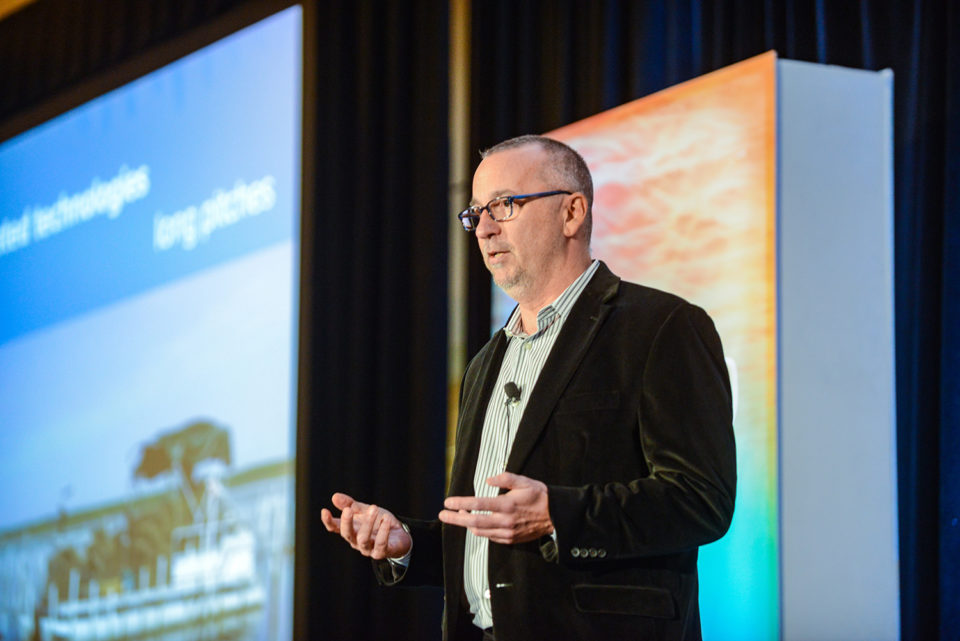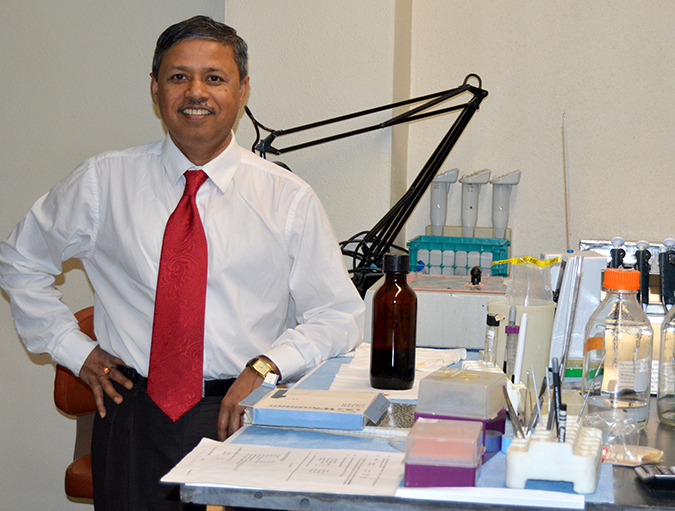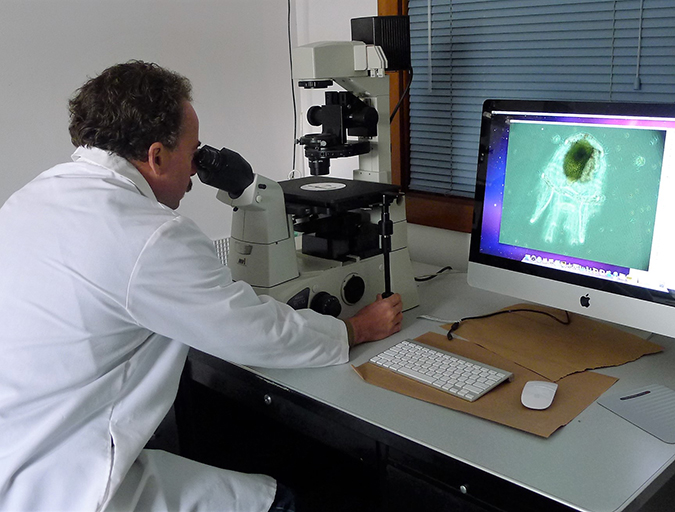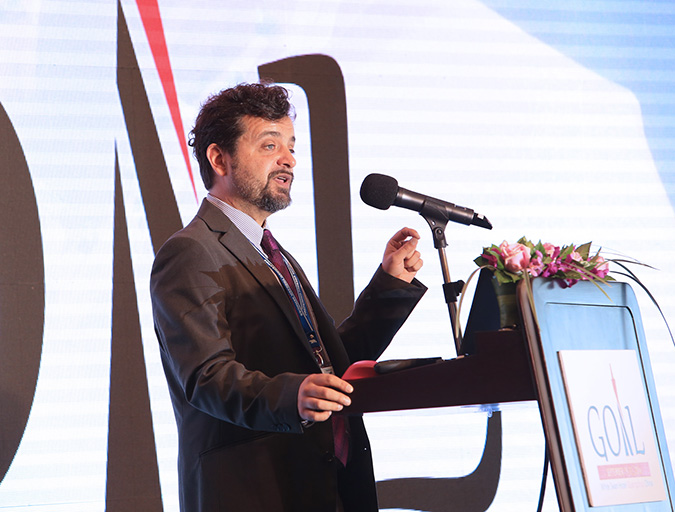Gaskiya Diagnostics’ affordable, quick solution will target smallholder aquaculture farms

In aquaculture, disease outbreaks are the ultimate profit killers.
Because fish are submerged in water, their overall health can be difficult to track. And when disease breaks out in a cage or in a tank, it can be nearly impossible to stop.
“There’s a period of time before you see it and recognize that you have a problem,” said Brent Whitaker, a longtime veterinarian who has worked in various capacities for the National Aquarium since 1989. “We are very limited in the sorts of medications we can use if we face a disease outbreak.”
Ken Malone, cofounder of Early Charm Ventures, a Baltimore-based investment and consulting firm, said that, when faced with disease, some farmers can lose their entire stocks in a matter of weeks.
“It’s devastating – especially for small fish farms,” added Malone. Early Charm hopes to address this problem with a new start-up effort called Gaskiya Diagnostics.
The company, which debuted at this year’s Fish 2.0 competition, is in the fundraising stage. It plans to release paper-based rapid diagnostic test (RDT) kits (think: home pregnancy tests), that will allow fish farmers to test for the presence of common disease-causing pathogens – such as Aeromonas hydrophila, which causes “ulcer disease,” or Vibrio, which causes vibriosis – in fish before they impact the entire stock.
It’s really intended for the small farmer to use – it takes no technical skill whatsoever.
Alex Meltzer, director of business development at Early Charm and a recent graduate of the University of Maryland School of Medicine sees Gaskiya Diagnostics as a potential game-changer. Until now, he added, fish farmers have had to spend time and money shipping diseased fish to a laboratory. As a result, they end up getting epidemiological information that might inform your farm in the big picture, but does little to stop an outbreak.
“This technology enables farmers not to have to say, ‘Why did they die?’ and instead allows them to ask, ‘What are they going to die from if we don’t act?’”
The science behind the test was initially developed by researchers at Harvard and MIT as a way to allow patients to test themselves for malaria. But this application didn’t make sense, said Malone, because the liability associated with having people take their own blood was too high. Besides, other rapid, affordable urine-based tests for malaria are also in the works.
Early Charm already had some aquaculture projects in development – including one that promises to provide vaccination for fish farmers – and Malone and his colleagues decided to apply the technology to fish farms.
This type of repurposing isn’t unusual for Early Charm, said Malone. “We’ve learned over the years that professors have really great science but they typically don’t understand markets, and so … we find those key science projects and we repurpose them for things that are more economically viable.”
For this reason, gatherings such as Fish 2.0 have been instrumental in helping the company network with others in the aquaculture space.
“We’re coming from outside that industry and they’ve done a great job of connecting us,” said Malone. And although Gaskiya Diagnostics has less of a clear tie to sustainability than the other startups pitching themselves to funders at the event, Malone said, “We like to think we’re the ultimate in sustainability. If your entire profit is gone, it’s not sustainable.”
To use the test, farmers will simply run a blood sample across a piece of paper.
“If there’s a specific pathogen that you’re looking for in the bloodstream, it will contract on the paper and then from there we can easily get a signal, which then essentially amplifies it quickly,” said Meltzer. The test then uses a colorimetric system, which makes it easy to spot the presence of a given pathogen.
Whitaker said that once a disease-causing pathogen of a bacterial nature is identified, the farmer can either use one of a few approved antibiotics to stop an outbreak.
Or, in some cases, he added, “We can make an [tailor-made] autogenous vaccine from that bacterium and then hopefully prevent other species from coming down with it.” But if it’s a viral outbreak, he added, veterinarians, “don’t really have good treatments yet.”
Gaskiya plans to begin piloting the tests in partnership with several aquaculture venture funds and incubators with farms in northern Europe and around the Mediterranean. Meltzer said the need for such technology is great.
“So when we talk to people about it [with potential partners], they’re all very interested in working with us,” he said.
Because it has yet to be used in the field, Whitaker said he still has some important outstanding questions about the tests.
“I would imagine that fishes often have these bacteria or viruses in such low numbers that they may never get sick,” he said. “So, when do you need to jump and when do you not? That’s what I’m less certain about. But the concept really intrigues me.”
While the larger animal health market is projected to reach $43 billion over the next five years, largely due to demand for medicine used in livestock, Melzer describes the current approach to health management in aquaculture as “archaic,” despite the recent growth of the industry overall.
Malone agrees. “The large animal health providers that participate in agricultural farming markets have not been actively growing in the aquaculture space,” he said. “And we think they’re crazy. There’s a huge opening – and we intend to develop new products to fill the gaps.”
And although Gaskiya Diagnostics will be tested in Europe, it may ultimately have the most benefit in Asia and in developing nations, where smallholder farmers stand to benefit from a test that will cost only around $5 to use.
“It’s really intended for the small farmer to use – it takes no technical skill whatsoever,” said Malone.
Follow the Advocate on Twitter @GAA_Advocate
Author
-
Twilight Greenaway
Twilight Greenaway is a freelance writer and editor and a contributing editor to Civil Eats.com.
Related Posts

Health & Welfare
A comprehensive look at the Proficiency Test for farmed shrimp
The University of Arizona Aquaculture Pathology Laboratory has carried out the Proficiency Test (PT) since 2005, with 300-plus diagnostic laboratories participating while improving their capabilities in the diagnosis of several shrimp pathogens.

Health & Welfare
Big shoes to fill: Dhar takes reins at shrimp pathology laboratory
Arun Dhar, Ph.D. will attempt to fill the “big shoes” of Dr. Donald Lightner at the University of Arizona’s Aquaculture Pathology Laboratory, where the shrimp disease EMS was diagnosed.

Innovation & Investment
Better together: Partnerships drive innovation at leading labs
Laboratories with industry partnerships are making aquaculture more innovative, efficient and responsible. These collaborations offer access to expertise, facilities and funding to further the industry and improve global food security.

Aquafeeds
Aquaculture Exchange: Giovanni Turchini, Deakin University, part 1
One of the world’s leading fish nutrition experts talks about how aquaculture can learn to survive, and even thrive without depending on fishmeal and fish oil. It’ll take a lot of innovation, but Giovanni Turchini is confident that the industry is on the right path.


